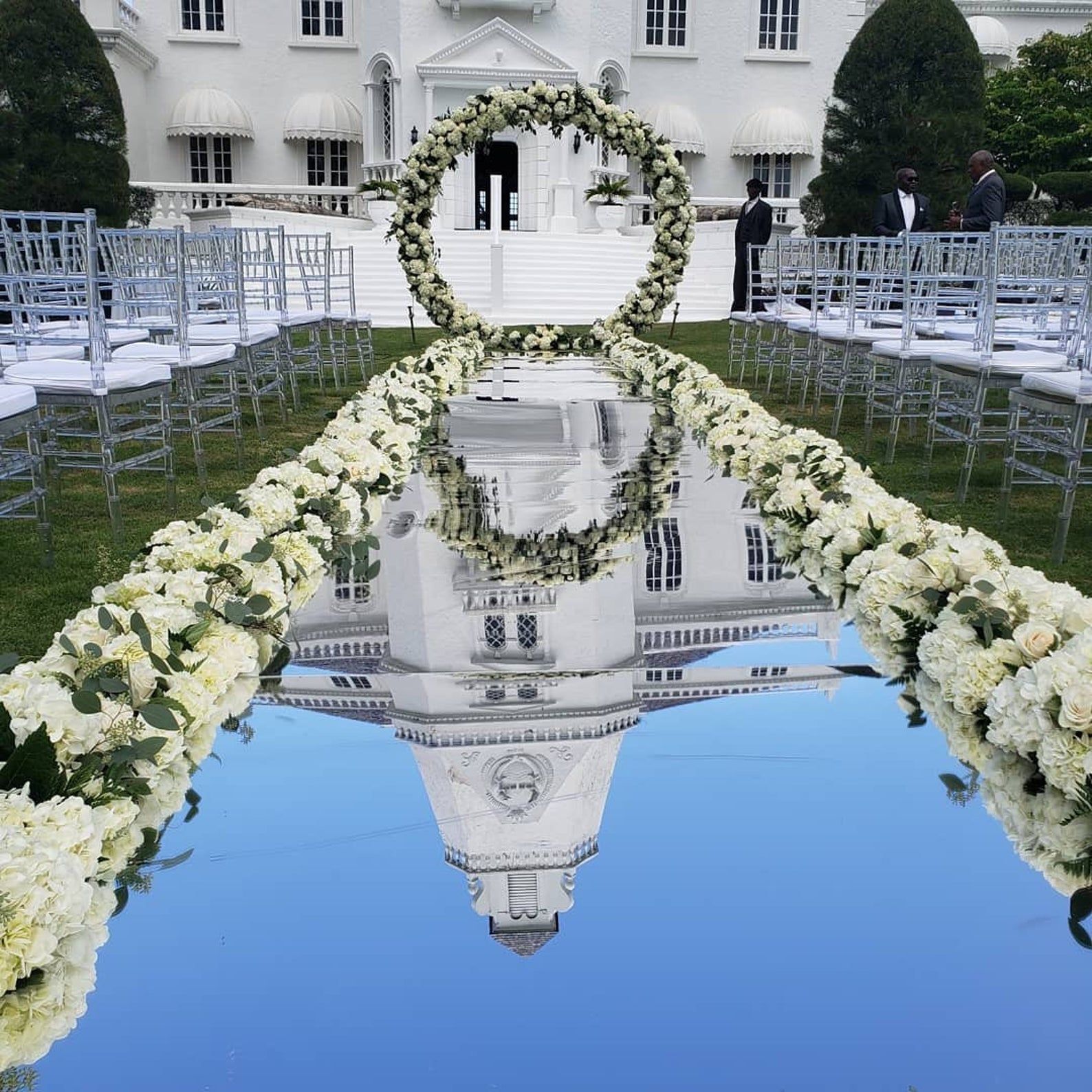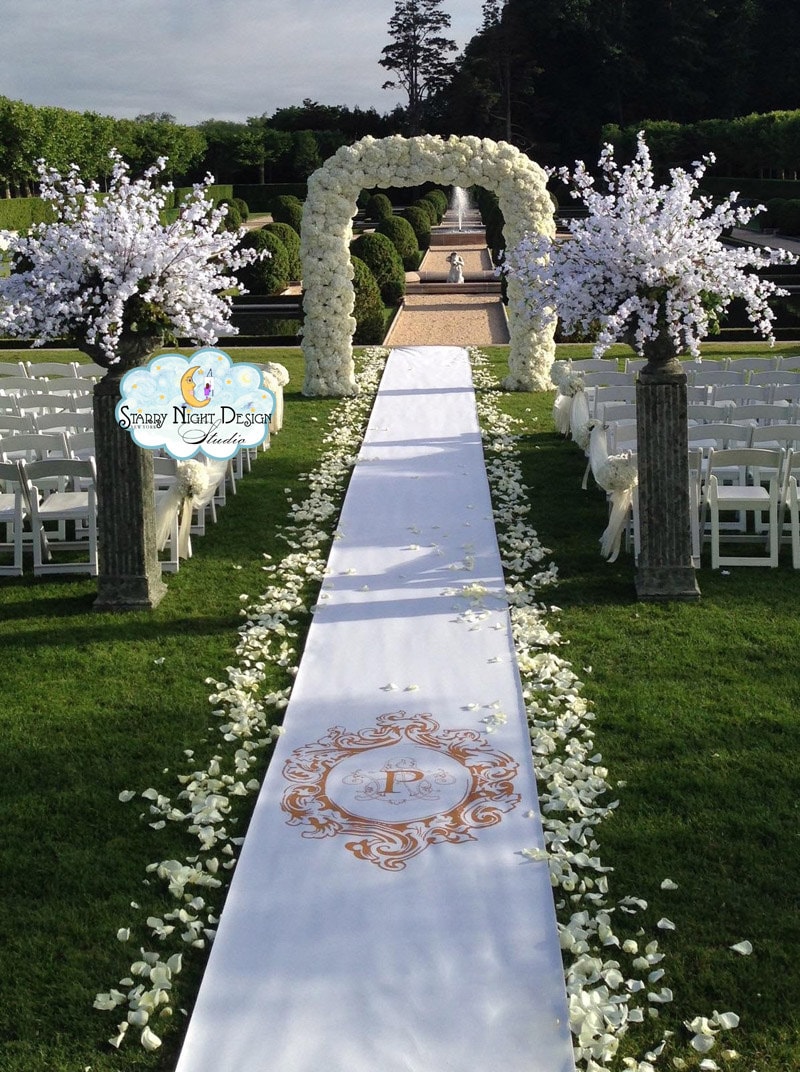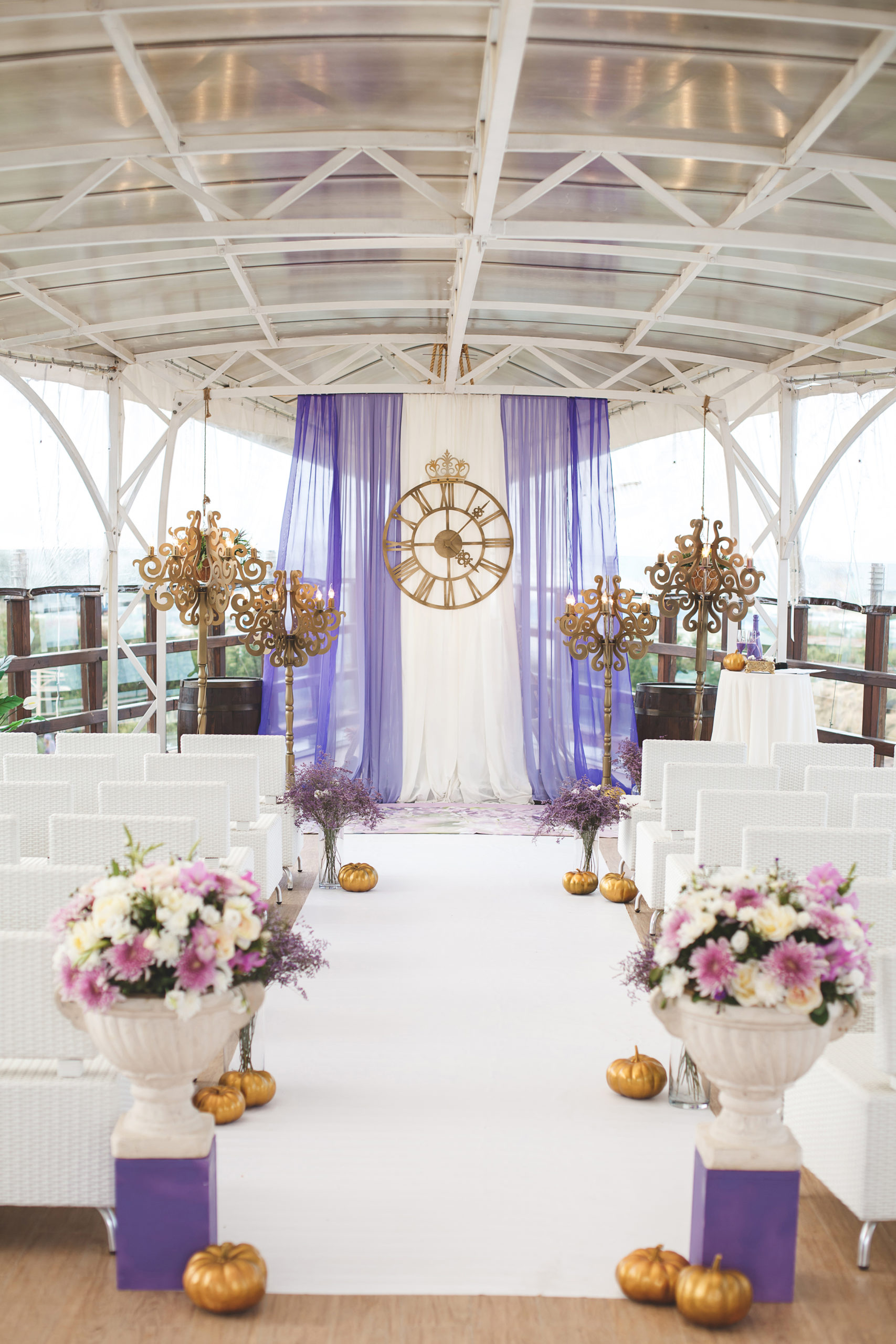Traditional Aisles

- White or Ivory
- Satin or Silk
- Embroidered or Beaded
- Sheer or Opaque
- Up to 100 feet long
Modern Aisles

- Colored ( blush , navy , emerald green , etc .)
- Velvet or Lace
- Printed or Textured
- Metallic or Sequined
- Can be shorter than traditional aisles
Alternative Aisles

- Burlap or Jute
- Wood or Bamboo
- Petals or Leaves
- Candles or Lanterns
- Carpet or Rug
Considerations
- Length: Determine the length of the aisle based on the size of the venue and the number of guests expected.
- Fabric: Choose a fabric that is durable and visually appealing. Consider the texture, color, and sheen.
- Width: The aisle should be wide enough for the bride and groom to walk comfortably side by side. The standard width is 3-4 feet.
- Embellishment: Add embellishments such as beading, embroidery, or sequins to enhance the look of the aisle.
- Color: The aisle runner can match the wedding theme or provide a contrast. White or ivory is the traditional choice, but colored runners are becoming increasingly popular.
Tips
- Use a double-sided tape or runner grips to keep the aisle runner in place.
- Consider using a carpet underneath the aisle runner to provide extra cushion and stability.
- Roll the aisle runner out in the venue ahead of time to ensure a smooth installation.
- Allow for extra length on both ends of the aisle runner for gathering and tying.## Wedding Aisle Runner
Executive Summary
Planning a wedding involves making countless decisions, one of which is choosing the perfect aisle runner. This guide provides comprehensive information on types, materials, lengths, and styles to help you find the most suitable aisle runner for your special day.
Introduction
The aisle runner plays a significant role in creating an elegant and unforgettable ambiance for your wedding ceremony. It sets the stage for the bride’s grand entrance and defines the path she will take to her beloved. Choosing the right aisle runner is essential to complement the overall theme and style of your wedding.
FAQs
1. How long should the aisle runner be?
The length of the aisle runner typically depends on the size and layout of the ceremony space. A general rule of thumb is to measure the distance from the end of the aisle to the altar or chuppah and add a few extra feet for draping or train arrangements.
2. What are the most popular materials for aisle runners?
Various materials are available for aisle runners, including:
- Sheer fabrics such as organza, tulle, and chiffon: create a romantic and ethereal look.
- Lace: adds a touch of elegance and sophistication.
- Burlap: provides a rustic and natural ambiance.
- Petals or greenery: create a whimsical and organic feel.
3. Is it necessary to secure the aisle runner in place?
Yes, securing the aisle runner is crucial to prevent it from shifting or slipping during the ceremony. Common methods include using adhesive tape, weights (e.g., sandbags or bricks), or attaching it to the floor with clips or pins.
Subtopics
Types of Aisle Runners
- Single Aisle Runner: A single piece of fabric creates a simple and classic look.
- Double Aisle Runner: Two separate aisle runners create a more dramatic and elegant effect.
- Runner with Border: A decorative border frames the aisle runner, adding a touch of color or pattern.
- Personalized Runner: Add a unique touch by embroidering or printing the aisle runner with the couple’s names or a special message.
Materials
- Organza: Sheer and delicate, creating an ethereal and romantic look.
- Tulle: Similar to organza but slightly stiffer, adding volume to the aisle runner.
- Lace: Adds a touch of elegance and sophistication to the ceremony.
- Burlap: Provides a rustic and natural ambiance, perfect for outdoor weddings.
- Petals or Greenery: Creates a whimsical and organic feel, ideal for bohemian or garden weddings.
Lengths
- 10-20 feet: Suitable for shorter aisles or ceremonies held in smaller spaces.
- 20-30 feet: A common length for indoor ceremonies or outdoor ceremonies with a short aisle.
- 30-40 feet: Ideal for larger outdoor ceremonies or ceremonies with a long aisle.
- 40-50 feet: Extra-long aisle runners for grand and elaborate ceremonies.
Styles
- Minimalist: A simple and elegant aisle runner with clean lines and minimal embellishments.
- Romantic: A romantic aisle runner features soft fabrics, flowing draping, and intricate lacework.
- Modern: A contemporary aisle runner with bold colors, geometric patterns, or metallic accents.
- Rustic: A rustic aisle runner incorporates natural materials such as burlap, jute, or wood.
- Whimsical: A whimsical aisle runner adds a touch of fun and creativity with unique patterns, textures, or decorations.
Tips
- Choose a material that complements the overall theme and style of your wedding.
- Consider the length and width of the aisle to determine the appropriate dimensions for the aisle runner.
- Secure the aisle runner properly to prevent any accidents during the ceremony.
- Add personal touches to make the aisle runner unique and memorable.
- Order the aisle runner well in advance to avoid any last-minute delays.
Conclusion
Choosing the right aisle runner is an important detail that can transform the ambiance of your wedding ceremony. By considering the type, material, length, and style, you can create a stunning and unforgettable entrance for the bride and groom. Whether you prefer a simple and elegant look or a more extravagant and personalized statement, this guide will help you find the perfect aisle runner to complement your special day.
Keyword Tags
- Wedding Aisle Runner
- Aisle Runner Types
- Aisle Runner Materials
- Aisle Runner Lengths
- Aisle Runner Styles






